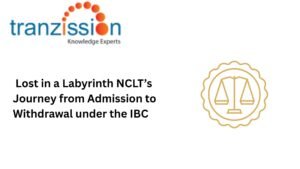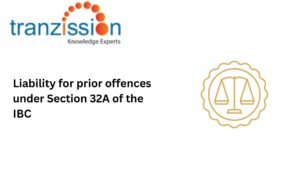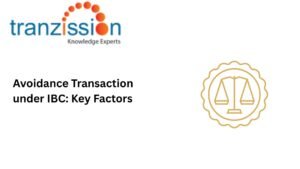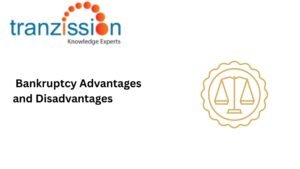
Role of Blockchain in Insolvency Framework
Table of Contents
Adopting technology within an insolvency framework is crucial to improve the efficiency, transparency, and accuracy of the insolvency process. Technological tools can lead to quicker resolution times and better outcomes for all stakeholders. Different technologies can be used to improve the resolution process, such as artificial intelligence, Blockchain in Insolvency, data analytics, and cloud computing. This article delves into the importance of integrating blockchain technology into the insolvency framework in India.
Challenges in the Current Insolvency Framework
The current insolvency framework in India, under the Insolvency and Bankruptcy Code, 2016 (hereon forward known as “the Code”), has many challenges, such as:
Procedural Delays and Inefficiencies:
The insolvency or liquidation proceedings face procedural delays and inefficiencies due to a number of factors, including the National Company Law Tribunal (NCLT) and National Company Law Appellate Tribunal (NCLAT) are often backlogged with cases. Complex legal procedures can lead to lengthy insolvency proceedings, causing delays in resolving distressed companies and impacting creditor recoveries. In reference to the IBBI Report on Effectiveness of the Resolution Process: Firm Outcome in the Post-IBC Period, the delays in the resolution process negatively affect the recovery rates for creditors and businesses.
Read more : Operational Creditor Challenges in IBC
Information Asymmetry:
If there is insufficient financial data submitted about the data, it can make it challenging for creditors to assess the viability of a company and make informed decisions about the insolvency process. This ‘information asymmetry’ complicates the insolvency resolution and delays the overall process. This lack of real-time access to accurate debtor information and any discrepancies in creditor claims leads to unfair treatment of all stakeholders and a lack of transparency in the insolvency process.
Fraud and Lack of Transparency:
Due to procedural delays, and lack of information, with the stress of repayment of debts, corporate debtors, creditors, and other stakeholders may resort to fraud, including asset misappropriation by debtors and manipulation of financial records.
What is Blockchain in Insolvency and How Can It Help?
Understanding Blockchain Technology:
A Blockchain in Insolvency is decentralized, immutable ledger technology that records transactions transparently and securely. It provides real-time updates of the information that it is handling for a particular task and is immutable, or cannot be changed.
Applications of Blockchain in the Insolvency Framework:
Blockchain in Insolvency can help a company during the insolvency process by providing clear and verifiable records of the company’s assets, managing financial information, and other areas:
Information Utilities (IUs):
This technology can be used to store and share debtor-creditor information securely and transparently. Working as a digital ledger which ensures authenticity of the information that has been shared over a network by all the stakeholders and allows for equal access to all the financial information by the stakeholders and decision-makers.
Read more : Role of ESG in Corporate Governance
Smart Contracts:
Automated recording of transactions on the Blockchain in Insolvency can significantly reduce administrative burdens associated with insolvency process. It can be used for smart contract contracts by providing a secure, transparent, and immutable platform to store and execute the contract logic, ensuring that the terms of the agreement are automatically enforced without the need for a central authority.
Asset Tracking:
Blockchain in Insolvency provides real-time traceability of assets to prevent fraud and misappropriation. It can efficiently track digital assets like cryptocurrency, which can be difficult to trace in tradition insolvency proceedings due to their decentralised nature.
Benefits of Blockchain in Insolvency Proceedings
The corporate sector would benefit from Blockchain in Insolvency technology functionality and application if it were applied to Information Utilities(IUs), including:
Enhancing Transparency:
Blockchain in Insolvency is essentially an immutable ledger. It can ensure transparency in record-keeping and stakeholders can access real-time data on creditor claims, debtor assets, and transactions. Therefore, it will be able to reduce any disputes that may arise from conflicting information.
Reducing Delays:
By automating manual processes, such as instance verification of claims through smart contracts and facilitating quicker information sharing between creditors, insolvency professionals, and regulators, Blockchain in Insolvency can reduce potential delays in the insolvency framework.
Improving Fraud Prevention:
Blockchain in Insolvency provides a transparent, immutable, and decentralised ledger that records all the necessary financial information and real-time asset tracking which ensures accountability. Hence, it prevents fraud by making it difficult for debtors to manipulate financial data or hide assets and real-time asset tracking ensures accountability.
Increasing Creditor Confidence:
By making the insolvency process fair, transparent, and free from any misuse, it builds trust among creditors by ensuring fairness and reducing uncertainty
Challenges in Implementing Blockchain in the Insolvency Framework
The decentralised nature of Blockchain in Insolvency presents several challenges in implementing it in the insolvency framework:
Regulatory and Legal Hurdles:
Blockchain transactions can occur across different jurisdictions, making it difficult to comply with multiple jurisdictions and making the process complex. Further, the lack of clear regulations around blockchain technology in insolvency proceedings gives freedom for using blockchain to an individuals benefit. This makes it challenging to align Blockchain in Insolvency with the existing IBC provisions.
Technological Barriers:
Due to the lack of standarised protocols for blockchain, it is difficult to achieve interoperability. Many regulators, companies, individuals, etc. are still using outdated technology and find it challenging to adopt blockchain into their current syste,. In fact, their staff may not be familiar with this technology and require further training. Blockchain requires infrastructure and high costs, often an option not available for many parties. Hence, the high implementation costs of Blockchain in Insolvency infrastructure and limited technical expertise among insolvency professionals and regulator, make it challenging in implementing blockchain in insolvency.
Stakeholder Adoption:
Stakeholders may lack the knowledge and technical know-how of blockchain. This makes them hesitant in adopting or issuing the use of this technology at any stage of the insolvency process. They will prefer the traditional methods over adopting new technologies.
Recommendations for Integrating Blockchain in India’s Insolvency Framework
Strengthening Information Utilities:
It is primarily advised to develop IUs to make them more secure and efficient. It is encouraged to transform the current laws on IUs to ensure real-time storage, retrieval of debtor information, and transparent sharing of data among creditors, professionals, and regulators.
Regulatory Support and Policy Changes:
Regulators need to make the necessary changes to the current system, such as introducing legal amendments, to enable Blockchain in Insolvency adoption. It is recommended to establish government-led initiatives to create a regulatory sandbox for testing blockchain solutions.
Training for Insolvency Professionals:
The Insolvency and Bankruptcy Board of India (IBBI) needs to introduced capacity-building programs to train professionals on blockchain technology and its applications. This ensures that they can adopt the necessary technology to make insolvency process transparent, fair, and effective.
Collaboration with Technology Providers:
To successfully implement blockchain into the insolvency framework, it is suggested to form partnerships between insolvency regulators, professionals, and Blockchain in Insolvency solution providers to develop tailored tools for the insolvency ecosystem.
The Way Forward: Blockchain as a Catalyst for an Efficient Insolvency Framework
Blockchain technology can help with insolvency proceedings by providing a secure and transparent way to record transactions. Its ability to create a transparent, efficient, and fraud-proof insolvency ecosystem can be game-changing for ensuring the development of India’s legal system. The nature of blockchain can change the framework of cross-border insolvency cases. However, to ensure that blockchain is properly implemented in the insolvency framework it is important to establish collaboration among policymakers, professionals, and technology providers.
Conclusion
Blockchain can address key challenges in the insolvency framework by providing a transparent, immutable, and readily verifiable record of asset ownership and transactions. This can improve the efficiency and accuracy of identifying, tracing, and valuing assets during insolvency proceedings, especially when dealing with digital assets like cryptocurrencies. It can address the key challenges in the insolvency framework, such as delays, information asymmetry, and fraud. As blockchain provides transparent, visible and immutable records, it may reduce an insolvency professional’s burden of work, increases creditor confidence, and helps regulators to streamline thei nsovlency process.





